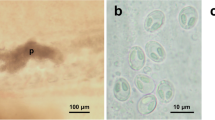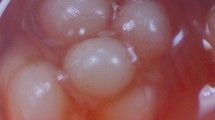Abstract
In the summer of 2014, mass mortality of the sichel, Pelecus cultratus (L.), was observed in Lake Balaton, Hungary. Parasitological examination conducted in the framework of a complete diagnostic survey revealed myxozoan infections. Two species of Myxobolus Bütschli, 1892 were found, one in the gill lamellae and another in the eyes. Following this mass mortality, 113 sichel specimens were examined during a 14-month period. Gill infection with scattered spores in the lamellae was found in 51 fish, while infection in the eyes was recorded in three specimens only. Based upon the morphological and molecular biological data the species from the gills is described here as Myxobolus peleci n. sp. and the species from the eye as M. cultrati n. sp. The 18S rDNA sequences of the two species proved that they differ from all known Myxobolus spp. with sequence data available in the GenBank database. Histological examinations revealed that the spores found in the gill lamellae were derived from plasmodia developing in and around the afferent branchial arteries of the gill arches. No mortality of sichel was recorded in 2015. Infection with these two Myxobolus spp. does not seem to play a role in the mortality of the host fish.





Similar content being viewed by others
References
Adriano, E. A., Arana, S., Alves, A. L., Silva, M. R., Ceccarelli, P. S., Henrique-Silva, F., & Maia, A. A. (2009). Myxobolus cordeiroi n. sp., a parasite of Zungaro jahu (Siluriformes: Pimelodiade) from Brazilian Pantanal: Morphology, phylogeny and histopathology. Veterinary Parasitology, 162, 221–229.
Awerinzew, S. (1913). Myxobolus magnus nov. sp. Zoologischer Anzeiger, 42, 75–76.
Barta, J. R., Martin, D. S., Liberator, P. A., Dashkevicz, M., Anderson, J. W., Feighner, S. D., et al. (1997). Phylogenetic relationships among eight Eimeria species infecting domestic fowl inferred using complete small subunit ribosomal DNA sequences. Journal of Parasitology, 83, 262–271.
Cech, G., Borzák, R., Molnár, K., & Székely, Cs. (2015). Three new species of Myxobolus Bütschli, 1882 (Myxozoa: Myxobolidae) infecting the common nase Chondrostoma nasus (L.) in the River Danube. Systematic Parasitology, 92, 101–111.
Cone, D. K., Horner, R. W., & Hoffman, G. L. (1990). Description of Myxobolus corneus (Myxosporea): a new species from the eyes of Bluegill from Illinois. Journal of Aquatic Animal Health, 2, 132–134.
Donec, Z. S., & Shulman, S. S. (1984). [Knidosporidii (Cnidosporidia). In: Bauer, O. N. (Ed.), Key to the determination of parasites of freshwater fishes of the USSR Vol. 1.] Leningrad: Nauka, pp. 88–251 (In Russian).
Dyková, I., Pecková, H., & Kostka, M. (2008). Introduction of Mayorella gemmifera Schaeffer, 1926 into phylogenetic studies of Amoebozoa. Acta Protozoologica, 47, 205–210.
Easy, R., & Cone, D. (2009). Taxonomy of Myxobolus ridouti n. sp. and M. ridgwayi n. sp. (Myxozoa) from Pimephales notatus and Semotilus atromaculatus (Cypriniformes) in Ontario. Journal of Parasitology, 95, 1446–1450.
Eszterbauer, E. (2004). Genetic relationship among gill-infecting Myxobolus species (Myxosporea) of cyprinids: Molecular evidence of importance of tissue-specificity. Diseases of Aquatic Organisms, 58, 35–40.
Eszterbauer, E., & Székely, Cs. (2004). Molecular phylogeny of the kidney-parasitic Sphaerospora renicola from common carp (Cyprinus carpio) and Sphaerospora sp. from goldfish (Carassius auratus auratus). Acta Veterinaria Hungarica, 52, 469–478.
Hallett, S. L., & Diamant, A. (2001). Ultrastructure and small-subunit ribosomal DNA sequence of Henneguya lesteri n. sp. (Myxosporea), a parasite of sand whiting Sillago analis (Sillaginidae) from the coast of Queensland. Australia. Diseases of Aquatic Organisms, 46, 197–212.
Li, L., & Desser, S. S. (1985). The protozoan parasites of fish from two lakes in Algonquin Park, Ontario. Canadian Journal of Zoology, 63, 1846–1858.
Li, Y. C., Sato, H., Tanaka, S., Ohnishi, T., Kamata, Y., & Sugita-Konishi, Y. (2013). Characterization of the ribosomal RNA gene of Kudoa neothunni (Myxosporea: Multivalvulida) in tunas (Thunnus spp.) and Kudoa scomberi n. sp. in a chub mackerel (Scomber japonicas). Parasitology Research, 112, 1991–2003.
Lom, J. (1961). [On some parasitic protozoa of Czechoslovak fish I.] Zoologicky Listy, 10, 45–58. (in Czech).
Lom, J., & Arthur, J. R. (1989). A guideline for preparation of species descriptions in Myxosporea. Journal of Fish Diseases, 12, 151–156.
Milne, I., Wright, F., Rowe, G., Marshall, D. F., Husmeier, D., & McGuire, G. (2004). TOPALi: Software for automatic identification of recombinant sequences within DNA multiple alignments. Bioinformatics, 20, 1806–1807.
Molnár, K., & Kovács-Gayer, E. (1985). The pathogenicity and development within the host fish of Myxobolus cyprini Doflein, 1898. Parasitology, 90, 549–555.
Molnár, K., & Székely, Cs. (1995). Parasitological survey of some important fish species of Lake Balaton. Parasitologia Hungarica, 28, 63–82.
Molnár, K., Székely, Cs., Csaba, Gy., Láng, M., & Majoros, G. (2001). [Results of veterinary-pathological research of Lake Balaton fishes (Balatoni halak kórtani kutatásának állategészségügyi eredményei)]. In: Results of Balaton research in 2000 [A Balaton kutatásának 2000. évi eredményei.] Budapest: Magyar Tudományos Akadémia, pp. 158-166 (In Hungarian).
Molnár, K., Székely, Cs., Csaba, Gy., Láng, M., & Majoros, G. (2002). [Results of veterinary-pathological research of Lake Balaton fishes (Balatoni halak kórtani kutatásának állategészségügyi eredményei)]. In: Results of Balaton research in 2000 [A Balaton kutatásának 2000. évi eredményei.] Budapest: Magyar Tudományos Akadémia, pp. 160-169 (In Hungarian).
Muzzal, P. M. (1995). Distribution of Myxobolus scleroperca (Myxobolidae, Myxosporea) in yellow perch (Perca flavescens) in the Great Lakes. Journal of Parasitology, 81, 498–499.
Rácz, O. Z., Eszterbauer, E., & Molnár, K. (2005). Hungactinomyxon a new actinosporean type and collective group (Myxozoa) from Branchiura sowerbyi Beddard (Oligochaeta). Systematic Parasitology, 61, 107–113.
Rumyantsev, E. A., & Shulman, B. S. (1997). [Myxobolus ladogensis n. sp. (Myxosporidia: Myxobolidae) - a parasite of cyprinid fishes (Cyprinidae).] Parazitologiya, 31, 179–180 (in Russian).
Székely, Cs, Cech, G., Chaudhary, A., Borzák, R., Singh, H. S., & Molnár, K. (2015). Myxozoan infections of the three Indian major carps in fish ponds around Meerut, UP, India, with descriptions of three new species, Myxobolus basuhaldari sp. n., M. kalavatiae sp. n. and M. meerutensis sp. n., and the redescription of M. catlae and M. bhadrensis. Parasitology Research, 114, 1301–1311.
Székely, Cs, Láng, M., & Molnár, K. (2010). Role of the copepod parasite Tracheliastes maculatus Kollar, 1836 (Lernaeopodidae) in the common bream (Abramis brama) mortality occurring in Lake Balaton, Hungary. Bulletin of the European Association of Fish Pathologists, 30, 170–176.
Tamura, K., Peterson, D., Peterson, N., Stecher, G., Nei, M., & Kumar, S. (2011). MEGA5: Molecular evolutionary genetics analysis using maximum likelihood, evolutionary distance, and maximum parsimony methods. Molecular Biology and Evolution, 28, 2731–2739.
Thompson, J. D., Higgins, D. G., & Gibson, T. J. (1994). CLUSTAL W: Improving the sensitivity of progressive multiple sequence alignment through sequence weighting, position-specific gap penalties and weight matrix choice. Nucleic Acids Research, 22, 4673–4680.
Acknowledgements
The authors thank the Balaton Fishery Ltd. and Drs András Specziár and Tibor Erős (senior scientists at the Balaton Limnological Institute, Centre for Ecological Research, Hungarian Academy of Sciences), for helping in the collection of sichel, and Ms. Györgyi Pataki for preparing the drawings and histological slides.
Funding
The study was supported by the Hungarian Scientific Research Fund (OTKA, project no. K100132).
Author information
Authors and Affiliations
Corresponding author
Ethics declarations
Conflict of interest
The authors declare that they have no conflict of interest.
Ethical approval
All applicable institutional, national and international guidelines for the care and use of animals were followed. Fishing was carried out with fishing permit for research purposes: HHgF/110-2/2016, Ministry of Agriculture, Hungary.
Rights and permissions
About this article
Cite this article
Borzák, R., Molnár, K., Cech, G. et al. Description of two new species of Myxobolus Bütschli, 1892, M. peleci n. sp. and M. cultrati n. sp., detected during an intensive mortality of the sichel, Pelecus cultratus (L.) (Cyprinidae), in Lake Balaton, Hungary. Syst Parasitol 93, 667–677 (2016). https://doi.org/10.1007/s11230-016-9651-y
Received:
Accepted:
Published:
Issue Date:
DOI: https://doi.org/10.1007/s11230-016-9651-y




